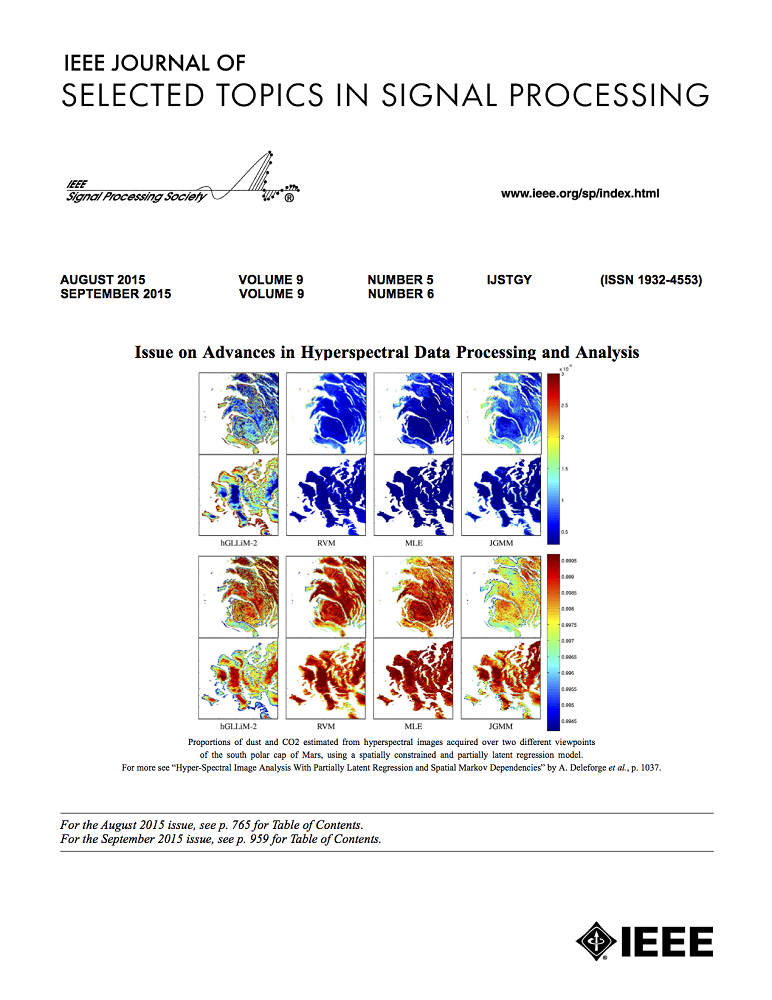6D移动天线的分布式信道估计与优化:揭示方向稀疏性
IF 8.7
1区 工程技术
Q1 ENGINEERING, ELECTRICAL & ELECTRONIC
IEEE Journal of Selected Topics in Signal Processing
Pub Date : 2025-02-11
DOI:10.1109/JSTSP.2025.3539085
引用次数: 0
摘要
六维移动天线(6DMA)是一种创新的变革性技术,通过根据信道空间分布调整天线/天线表面的三维位置和旋转来提高无线网络容量。为了获得最佳的天线位置和旋转,获取统计信道状态信息(CSI)对6DMA系统至关重要。然而,现有的工作假设一个中央处理器(CPU)共同处理所有6DMA表面的信号。由于大量的6DMA候选位置/旋转和天线元件,这会导致极高的处理成本和信道估计延迟。因此,我们提出了一种分布式6DMA处理架构,通过为每个6DMA表面配备一个本地处理单元(LPU)来降低CPU的处理复杂性。此外,我们首次揭示了6DMA信道相对于分布式用户的方向稀疏性,其中每个用户仅对6DMA位置旋转对的一个(小)子集具有显着的信道增益。基于这一特性,我们提出了一种实用的6DMA系统三阶段协议和相应的算法,对所有6DMA候选位置/旋转进行统计CSI采集,基于统计CSI的6DMA位置/旋转优化,以及对优化后的6DMA位置/旋转进行用户数据传输的瞬时CSI估计。仿真结果表明,所提出的信道估计算法比基准方案具有更高的精度,且所需的导频开销更小。此外,本文提出的基于统计CSI的位置/旋转优化的6DMA系统比固定位置和流体天线系统实现了更高的遍历和速率,即使后者具有完美的瞬时CSI。本文章由计算机程序翻译,如有差异,请以英文原文为准。
Distributed Channel Estimation and Optimization for 6D Movable Antenna: Unveiling Directional Sparsity
Six-dimensional movable antenna (6DMA) is an innovative and transformative technology to improve wireless network capacity by adjusting the 3D positions and rotations of antennas/antenna surfaces based on the channel spatial distribution. To achieve optimal antenna positions and rotations, acquiring statistical channel state information (CSI) is essential for 6DMA systems. However, existing works assume that a central processing unit (CPU) jointly processes the signals of all 6DMA surfaces. This incurs prohibitively high processing cost and latency for channel estimation due to the vast numbers of 6DMA candidate positions/rotations and antenna elements. Therefore, we propose a distributed 6DMA processing architecture to reduce the processing complexity of the CPU by equipping each 6DMA surface with a local processing unit (LPU). Furthermore, we unveil for the first time the directional sparsity property of the 6DMA channels with respect to distributed users, where each user has significant channel gains only for a (small) subset of 6DMA position-rotation pairs. Based on this property, we propose a practical three-stage protocol for the 6DMA system and corresponding algorithms to conduct statistical CSI acquisition for all 6DMA candidate positions/rotations, 6DMA position/rotation optimization based on statistical CSI, and instantaneous CSI estimation for user data transmission with optimized 6DMA positions/rotations. Simulation results show that the proposed channel estimation algorithms achieve higher accuracy than benchmark schemes, while requiring lower pilot overhead. Moreover, the proposed 6DMA system with statistical CSI-based position/rotation optimization achieves a higher ergodic sum rate than fixed-position and fluid antenna systems, even if the latter have perfect instantaneous CSI.
求助全文
通过发布文献求助,成功后即可免费获取论文全文。
去求助
来源期刊

IEEE Journal of Selected Topics in Signal Processing
工程技术-工程:电子与电气
CiteScore
19.00
自引率
1.30%
发文量
135
审稿时长
3 months
期刊介绍:
The IEEE Journal of Selected Topics in Signal Processing (JSTSP) focuses on the Field of Interest of the IEEE Signal Processing Society, which encompasses the theory and application of various signal processing techniques. These techniques include filtering, coding, transmitting, estimating, detecting, analyzing, recognizing, synthesizing, recording, and reproducing signals using digital or analog devices. The term "signal" covers a wide range of data types, including audio, video, speech, image, communication, geophysical, sonar, radar, medical, musical, and others.
The journal format allows for in-depth exploration of signal processing topics, enabling the Society to cover both established and emerging areas. This includes interdisciplinary fields such as biomedical engineering and language processing, as well as areas not traditionally associated with engineering.
 求助内容:
求助内容: 应助结果提醒方式:
应助结果提醒方式:


